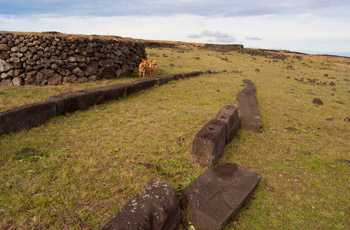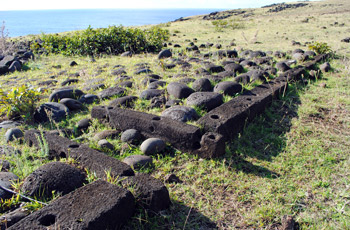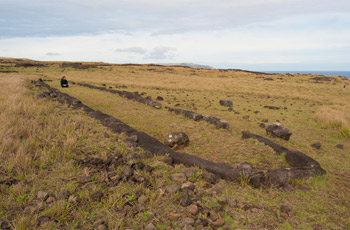Easter Island boat house - hare paenga
 Boat house with wooden frame, paenga foundation blocks and paved terrace, without thatched roof.
Boat house with wooden frame, paenga foundation blocks and paved terrace, without thatched roof.
The common house in ancient times at Easter Island is called boat house or hare paenga ("paenga house"). The term boat house has been applied in more modern times, referring to the resemblence the finished houses have to a boat turned upside-down on land. Its aerodynamic shape helps against the strong winds at Rapa Nui.
There are hundreds of boat houses all over Easter Island. Their average length is approximately 15 m, but the biggest one (in Tepeu area) is a whole 45 m long.
French missionary Eugenio Eyraud, the first foreigner to live with the Rapa Nui people, slept in a boat house during his 1864 visit. In Eugenio's long letter about his stay he describes them like this:
The furniture is very simple: the kitchenware consists of a gourd to contain water and a straw woven sack to keep the sweet potatoes. In relation to the bed and its furniture, you can already imagine how they are as soon as I talk about the cabin. Imagine an upside down, half opened boat resting on the slit of its base, and you will get an idea about the shape of this cabin. Some sticks wrapped up with a straw give shape to the frame and the roof. A doorway shaped like an oven mouth allows its inhabitants and visitors to enter, crawling, not on their knees but on their stomach. This doorway is situated in the middle of the cabin and allows just enough light to pass through to be able to see one another after a few moments inside.



